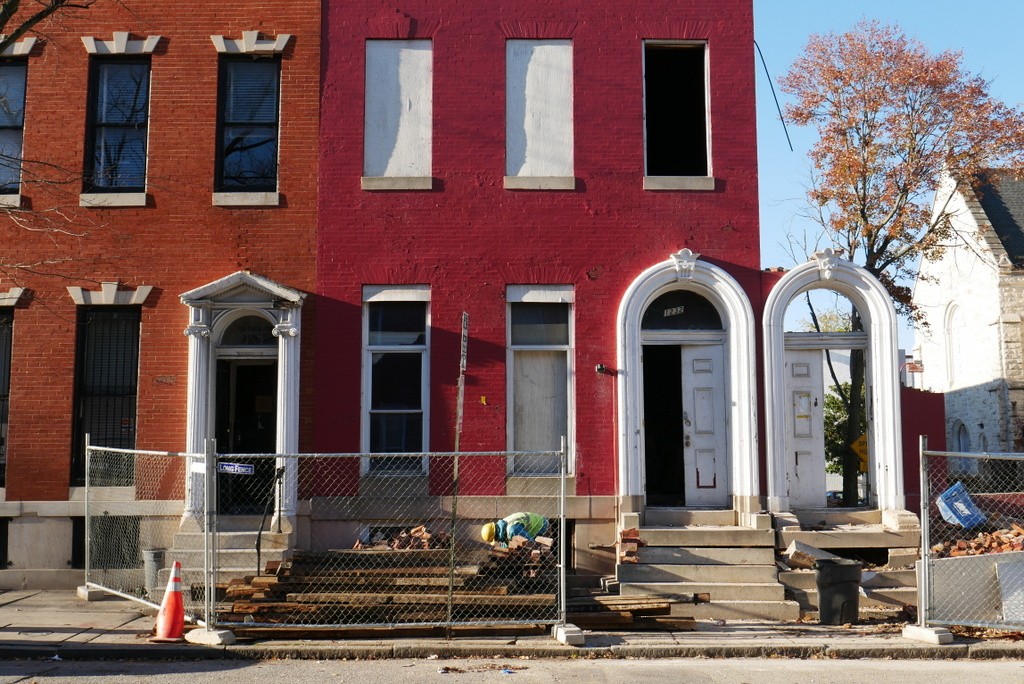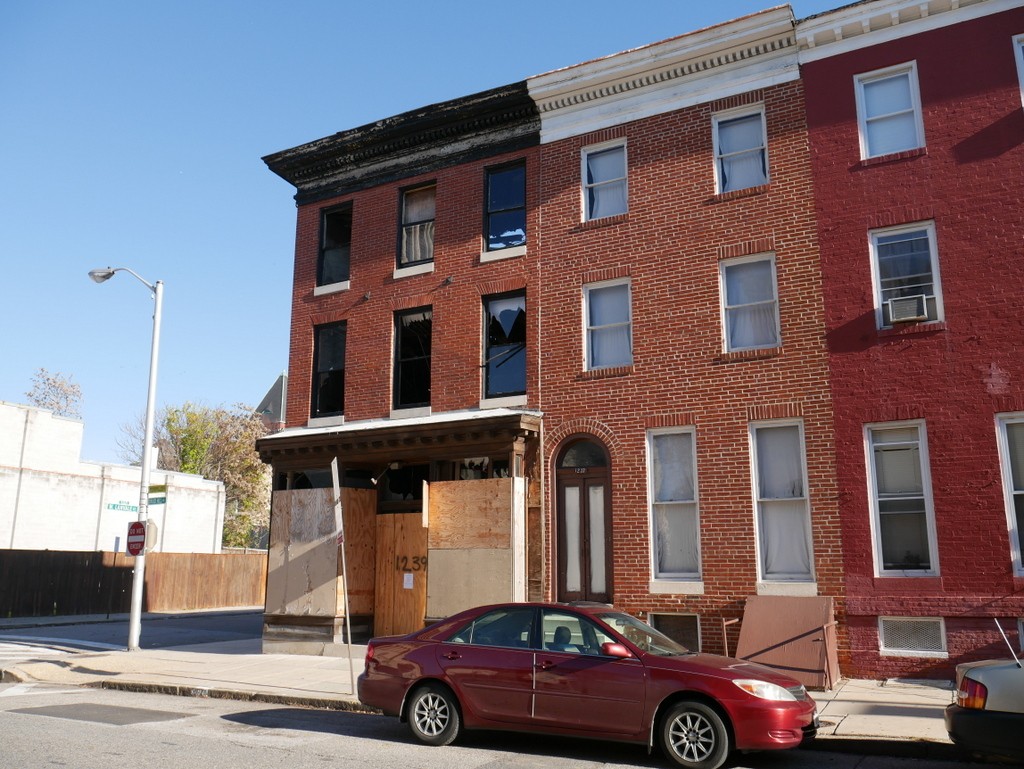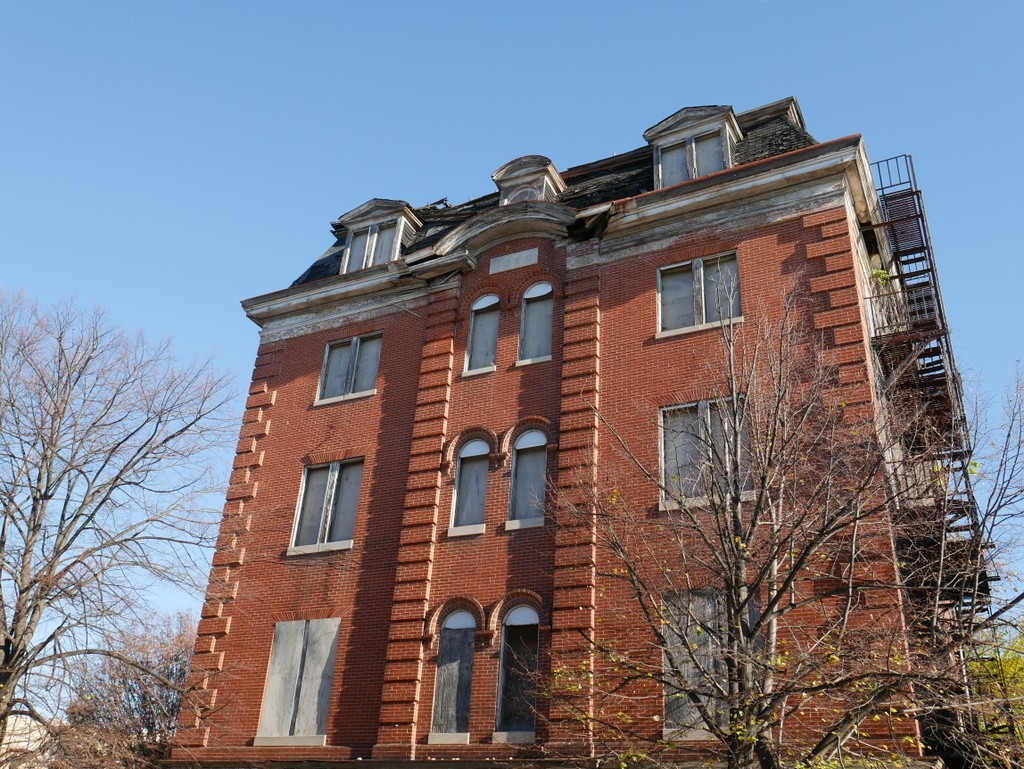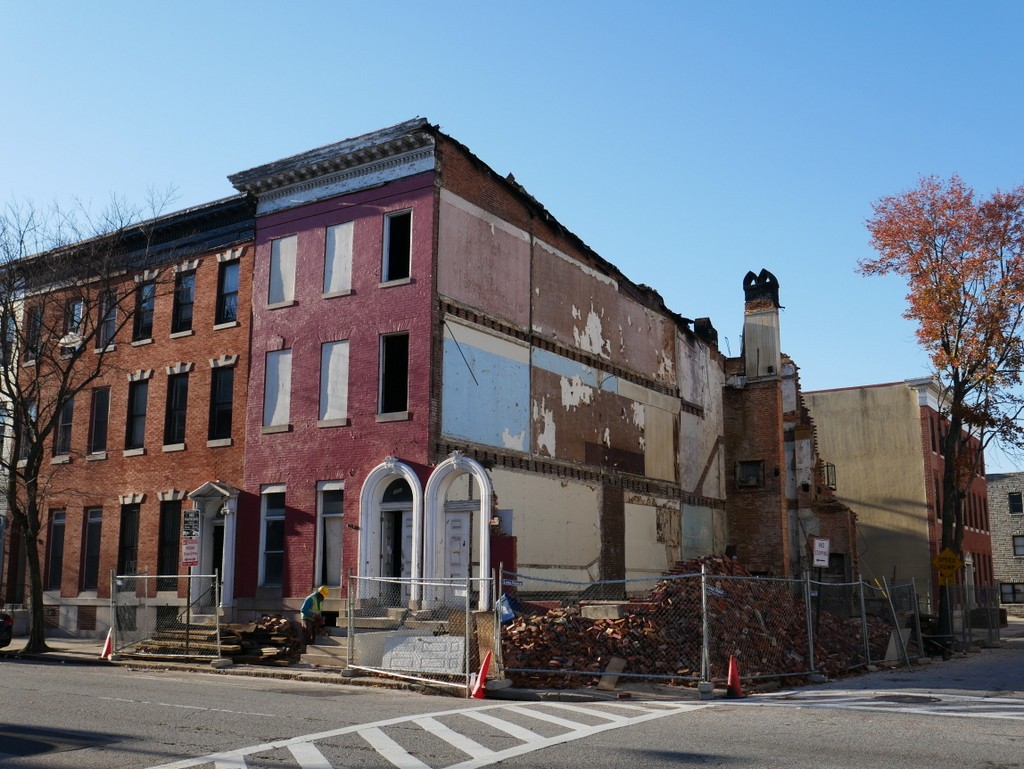1234 Druid Hill Avenue had a story unlike any other. Harry S. Cummings, Baltimore’s first black City Councilman lived at the handsome rowhouse with his family from 1899 to 1911. In the 1950s and 1960s, the building served as offices to the local chapter of the NAACP, hosting Martin Luther King and Eleanor Roosevelt when they came to Baltimore to work with key leaders like Lillie Mae Carroll Jackson. In 1970, the property became “Freedom House” and continued to serve as a central hub of activism before Dr. Jackson donated the house to Bethel AME Church in 1977. Today, the house is demolition site piled high with bricks and debris.
Yesterday afternoon, Baltimore Heritage supported a rally organized by civil rights and heritage leaders Marvin Cheatham and Louis Fields to protest the demolition of the Freedom House by Bethel AME Church and start a conversation around saving threatened historic Civil Rights landmarks in the neighborhood. As we shared on Wednesday, members of the Marble Hill Community Association, who have been working to encourage the preservation of the Freedom House for years, were unable to stop the demolition when they contacted city officials with concerns in September and October. Regrettably, Baltimore Heritage only learned about this issue after the demolition began.

You can read more about the rally in the Baltimore Sun or see coverage from WJZ CBS. We are seeking a meeting with the leadership of Bethel AME Church and City Councilman Eric Costello to better understand how this demolition took place and what we can do to protect the building next door at 1232 Druid Hill Avenue from the immediate threat of demolition. We are also working with Baltimore’s preservation commission and neighborhood residents to expand the boundaries of the Upton’s Marble Hill CHAP District.
Where do we go from here?
The rally gave our community a place to voice concerns and to make plans for the future. We lost one important building this week but there are many more that still need our help. We have already identified seven Civil Rights landmarks in Upton alone that are threatened by neglect. You can help by sharing your knowledge about buildings or sites associated with Baltimore’s Civil Rights movement more information about these and other properties or by exploring our map of Civil Rights site to learn more.
Here are three of the buildings in historic Marble Hill that we are working to preserve:
Mitchell Family Law Office

1239 Druid Hill Avenue served as law offices for Juanita Jackson Mitchell, Clarence Mitchell, Jr. and other members of the Mitchell family. An accomplished lawyer and activist, Juanita Jackson Mitchell organized the Citywide Young People’s Forum in the 1930s to push for more opportunity for black youth during the Great Depression. Clarence Mitchell, Jr. served as the long-time lobbyist for the NAACP and played a key role in the passage of major Civil Rights legislation. The roof of 1239 Druid Hill Avenue collapsed during the winter of 2014 and the building is severely threatened by neglect.
Juanita Jackson and Clarence Mitchell, Jr. House

Juanita Jackson and Clarence Mitchell moved to 1324 Druid Hill Avenue in 1942, the same year Clarence started working at the Fair Employment Practices Commission set up by President Roosevelt to fight workplace discrimination during WWII. Visitors at the home included Paul Robeson, Duke Ellington, and Marian Anderson. The couple raised five sons at the house and continued to live there until the end of their lives. Baltimore City stabilized the roof and rear wall of the building in 2013 but it remains vacant and in poor condition.
Druid Health Center/Home of the Friendless

A former orphanage (listed on the National Register of Historic Places as the Home of the Friendless), the Druid Hill Health Center at 1313 Druid Hill Avenue was the first public health center for African Americans in Baltimore. Years of vacancy and neglect have caused the building to deteriorate and neighborhood residents have pushed the city to stabilize the structure without success. A local developer recently submitted a proposal for 14 artist residences with preliminary support by the Marble Hill Community Association.
Why are we fighting to save Civil Rights heritage?
We believe that these buildings are important for the stories they hold and the lessons they teach. We also recognize that we cannot separate historic preservation from the difficult issues of vacancy and disinvestment in Upton and in many of Baltimore’s historically African American communities. To save Baltimore’s Civil Rights sites, we must listen to the people who live nearby and work together to revitalize their neighborhoods.
We do not yet have the solution to the decades-old problems of disinvestment that threaten so many homes in Marble Hill, but we do believe that preserving historic buildings is part of a solution. The stories behind these buildings help us understand Baltimore’s history of segregation and discrimination—a history that still contributes to challenges in these neighborhoods today. As Baltimore’s own Frederick Douglass remarked in 1884:
It is not well to forget the past. Memory was given to man for some wise purpose. The past is… the mirror in which we may discern the dim outlines of the future.
With Frederick Douglass’s words in mind, we are working to turn Civil Rights landmarks throughout the city back into assets for Baltimore neighborhoods and address the inequality that continues in too many Baltimore communities. Please help us find ways to save our city’s diverse heritage and build a stronger and more equitable future for Baltimore by contributing to our growing list of identified Civil Rights heritage sites and subscribing for updates on this important work.


I think these buildings should be rehabilitated, on the citys dime! After all, who’s blood, sweat, and tears were these buildings origionally built? How much money did they make putting up these structures? Let’s think about righting some wrong.
I am very sorry to hear this. This is the neighborhood that I grew up in and my younger brother used to work there during the summer in the 1970s
The issue of vacant homes is not a color issue it’s a dollar issue. So many of these homesh go to one house at a time or receivership program in the Circuit Court AND THEY CONTINUE TO SIT AND THE DETERIORATION GETS WORSE… but they quality because of a $90,000.00 showable bank account. THESE people have money but not any heart not able to comprehend the serious issue of homeless FAMILIES…white and black… That would give anything to be able to work together as a community of talent in all categories and could’ve saved and been living in these home’s left to just sit and eventually become paid parking lots. It’s disgusting that people like me who are disabled from environmental issues that are going on when laws don’t allow them to… continue to make us sick and we live outside because our corrupt government pretty much makes it the only option. Homes thrown up just to make a dollar from are usually not safe to live in. I made 27$/hr as a LPN geriatric nurse who loves our elderly many owners of the homes we allowed to waste away because no family wants to be bothered or not legally legtby words on a document. Now homeless no drudrink not a drug addict. Lyme’s Disease caused from a fungal knat…mold in a home just left to be a financial gain by the slumlord. Many things are not right about the laws and staues on paper. What about the laws of society and nature. Constitutional Rights that state a healthy happy home is a right. Having a home is a right. Watching these home’s fall or be knocked to the ground when lots of the homes housed people who stood up for constitutional rights is just CONSTITUTIONALLY WRONG.
Thank you for sharing this.